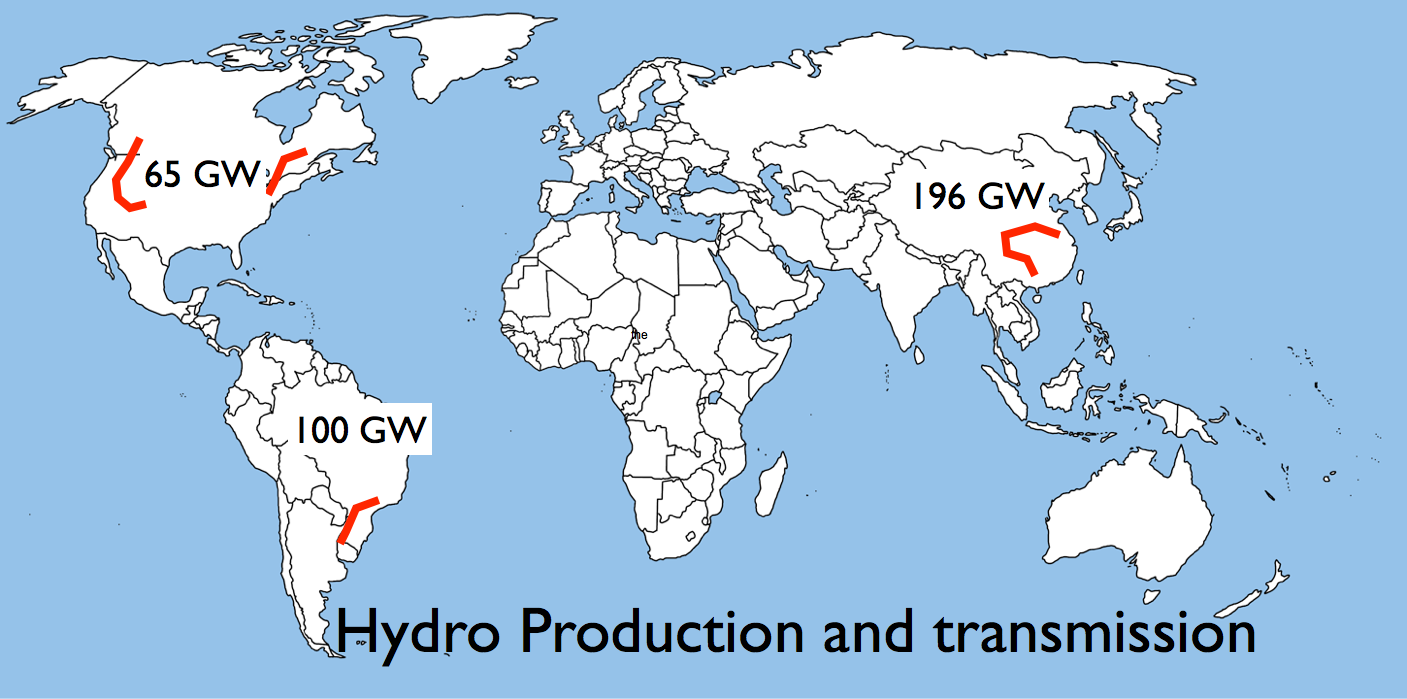Using 2.53 quadrillion BTU output of US hydro electric dams, and 318 million BTU per person average US consumption The sustainable US population should be about 8 million people.
There are considerations that will move this number up and down. If we add in the hydro production of Canada (that is the dams that do not require the maintenance of too much infrastructure and will not silt in before 400 years, and we eliminate the US and Canadian dams that require too much rail and transmission lines maintenance and will silt in) we might have enough net power to support 10 million people in all of North American.
This 10 million population number reflects the 318 million BTU's of energy consumed by each person which can also be adjusted up and down. In this proposed new society more energy per capita might be used to supply healthcare and education, resulting in the support of a smaller population, while less energy might be allocated for transportation and housing resulting in the support of a larger population.
For example tower housing may be more energy efficient than suburban housing. Urban design has less road and bridge infrastructure per capita than suburban sprawl. Electric motors are more efficient than internal combustion engines.
Not being distributed over the entire continent greatly decreases the number of miles of road and bridges that must be maintained. No planes or airports or plane manufacture or repair plants need to be maintained. No cars need to be built and maintained. Nor any parking garages or gas stations, or tank trucks or refineries or pipe lines. Even the amount of electric transport (rolling stock, rails, bridges, tunnels) is much smaller per capita because these rails service just the urban environment and a small number of spurs to connect outlying service areas e.g. dams, electric grids, and food production. Distances will become smaller, Shopping might be done in the lower levels of tall residential buildings. Underground trains will connect retail outlets to manufacturing facilities, services, and farms. Other underground trains will transport people. Everything on the surface will be pedestrian walk ways, open space and bike paths. (More)
In extending this North American civilization model to the whole world there are two considerations
1) the location of the dams relative to transmission and transportation lines, farm land, and climate
2) the combined power capacity of the regional dams.
 Figure 2 Location of adequate consolidation of hydro electric dams
Figure 2 Location of adequate consolidation of hydro electric dams
Some groups of regional dams in the world will not produce enough net energy to support a large enough civilization to support a full complement of technologists and concert violinists. This mimimum population, first estimated to be 10 million people, means there are possibly 3 locations in the world that could supply enough power. The Pacific Northwest in North America, Brazil-Paraguay in South America, and Three Gorges in China.
The rest of the world, Africa, Europe, Russia, India, Australia, and Southeast Asia may not produce enough linked together hydro electric output to support 10 million at the 318 million BTU life style. With North America supporting 10 million, Brazil supporting 15 million, and China supporting 25 million, the total world population supportable with hydro does not exceed 50 million.
